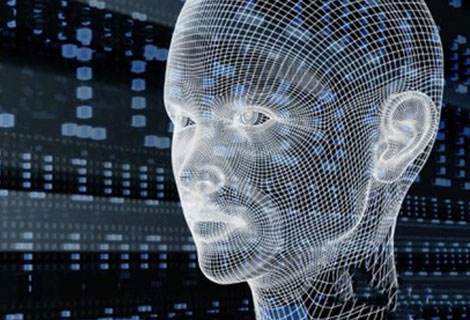(单词翻译:单击)
听力文本
AI Cameras Aim to Guess Shopper's Age, Sex and Mood
Facial recognition technology is increasingly being used today in many places in the United States and overseas. Such systems use machine learning tools to scan faces in an attempt to recognize particular individuals.
Many police agencies across the world have long used facial recognition technology to search for and help catch criminals.
The technology has also been used at some U.S. airports to help confirm the identity of passengers and get them on flights. It is also used to unlock phones or other electronic devices, and in some cases, even cars. Some robots use facial recognition to recognize the people it is communicating with.
Now, a similar technology — known as facial detection — is entering a new field: the business of advertising. Facial recognition technology is meant to identify a specific individual. Facial detection systems aim to detect the presence of a person and try to predict some facts about them. In the United States, such systems are currently being tested in a small number of stores.
Businesses use cameras set up inside the stores or public area. The cameras scan the faces of individuals and predict their age and sex. Some systems are also designed to judge a person's emotions.
That information can then be used to target people with real-time advertisements on video screens during their visit to the store.
Several of these systems were demonstrated earlier this year at a gathering of the National Retail Federation, the Associated Press reports.
One facial detection system, developed by a company called Mood Media, aims to judge a person's "happiness" or "fear" level. Businesses could use such information to get real-time reactions from people as they look at products or video ads in the store. Such a system could also be used as part of a company's efforts to test the popularity of specific products.

Another company, Cineplex Digital Media, showed off a camera-powered system designed for use in retail businesses, on the street or at bus stops. The company says its product can detect things like whether someone is wearing eyeglasses or has facial hair. That information could then be used to target those people with ads for new glasses or shaving equipment.
Such systems could also be used by restaurants to send ads to people driving up for window service. If the camera recognizes a large vehicle, for example, the system could send an ad for a family-sized meal.
Facial detection technology has reportedly also been placed inside large billboard signs at Westfield centers in Australia and New Zealand. Britain's The Guardian newspaper reported there are currently more than 1,600 camera-equipped billboards at more than 40 of the company's retail centers.
Quividi, a French-based company, developed the billboard system. The signs are equipped with cameras with the ability to detect information about people in crowds. Quividi claims the system can correctly predict a person's sex at least 90 percent of the time, The Guardian reported. It is also designed to detect a person's age and five levels of emotion – from "very happy" to "very unhappy."
Some privacy groups have criticized the use of such facial detection systems. Pam Dixon heads the World Privacy Forum, a not-for-profit group that researches privacy issues.
"The creepy factor here is definitely a 10 out of 10," she told the AP.
Dixon added that the technology could lead to some discriminatory methods. For example, a business could raise the price of a product or service based on a person's age. Or it could target a person with an ad for an anti-depression drug if the individual appears to have a sad facial expression.
"We shouldn't be gathering the emotional state of anyone," Dixon said.
One company testing the technology in two of its U.S. stores is large food retailer Kroger. The company told the AP its cameras aim to predict a shopper's age and sex. But Kroger said the personal information is anonymous and not stored away.
Quividi, the maker of Westfield's billboard system, says on its website that it only stores anonymous information "that describes the size and the demographics of an audience." The company added that it does not keep any identifiable information about people and does not record any images or video.
Supporters of the technology say it could improve the buyer's experience by drawing attention to products they might like or by offering them special deals.
I'm Bryan Lynn.
重点解析
重点讲解:
1. search for 搜寻;搜索;搜查;寻求;
She searched in vain for her passport.
她翻找自己的护照,但没找着。
2. set up 安装好,装配好,调试好(设备或机器);
She set up her stereo in her bedroom.
她把立体声音响装在了卧室里。
3. show off 卖弄,炫耀,显摆(某物);
He likes to show off how well he speaks French.
他喜欢向人展示他法语讲得有多好。
4. store away 贮存;储备;存放;
He simply stored the tapes away.
他只是将磁带存放起来。
参考译文
人工智能摄像头旨在猜测消费者的年龄、性别和情绪
如今,面部识别技术在美国和其他国家的多个地方得到了日益广泛的应用。这种技术用机器学习工具扫描面部,以识别特定个体。
长期以来,全球许多警察机构使用面部识别技术来搜索罪犯并协助抓捕罪犯。
该技术还应用于一些美国机场,帮助确认乘客的身份并帮助他们登机。这项技术还用来解锁手机或其他电子设备,有时甚至可以用来解锁汽车。有些机器人用面部识别来辨认与他们进行交流的人。
现在,一项被称为面部检测的类似技术进入了新的领域:广告业务。面部识别技术旨在识别特定个体。而面部检测系统的目的是检测某人的存在,并试图预测与其有关的一些事实。目前,该技术正在美国的几家商店进行测试。
商店通常会在店内或公共区域安装摄像头。这些摄像头会扫描个体的面部并预测他们的年龄和性别。一些系统还可以判断人们的情绪。
这些信息可被应用于目标人群,当他们去商店时在电视屏幕上播放实时广告。
据美联社报道,其中一些系统在今年早些时候举行的全美零食商集会上展示。
其中一个面部检测系统由Mood Media公司研发,旨在判断人们的幸福或害怕水平。在人们查看商品或观看店内视频广告时,商店可用此类信息获取人们的实时反应。这种系统还可以帮助公司测试特定产品的欢迎度。
另一家公司Cineplex Digital Media展示了一个应用在零售店、街道或公交车站的摄像头系统。该公司表示,其产品可以检测出人们是否戴着眼镜或是否有胡子。这一信息可用来向目标人群推荐新款眼镜或剃须工具的广告。
这类系统还能被餐厅用来向开车寻求窗口服务的人群发送广告。举例来说,如果摄像头发现一辆大型车,该系统可以发送家庭套餐广告。
据说,面部检测技术也被植入澳大利亚和新西兰的韦斯特菲尔德购物中心的大型广告宣传牌中。据英国《卫报》报道,目前已有超过40家韦斯特菲尔德购物中心安装了1600余个摄像头设备。
法国公司Quividi研发了这种广告牌系统。配备摄像头的广告牌可以检测到人群中某个个体的相关信息。据《卫报》报道,Quividi公司称这一系统预测人们性别的准确率至少可达到90%。该系统还能检测人们的年龄和五种情感水平——从“非常开心”到“非常难过”。
一些私营组织对这类面部检测系统的应用进行了批评。世界隐私论坛是一家研究隐私问题的非营利组织,帕姆·狄克逊是该组织的负责人。
她对美联社表示,“令人毛骨悚然的是,准确率达到100%。”
狄克逊指出,这项技术可能导致带有歧视性的做法。比如,一家企业可能会根据人们的年龄抬高产品或服务的价格。或者,如果有人的表情看起来很悲伤,那企业会给这个人发送抗抑郁药的广告。
狄克逊说,“我们不应该采集任何人的情绪状态。”
大型食品零售商克罗格公司在美国有两家商店,他们在其中一家商店测试了这项技术。该公司对美联社表示,摄像头旨在预测购物者的年龄和性别。但克罗格公司表示,个人信息是匿名的,而且不会被储存。
韦斯特菲尔德购物中心广告牌系统的制造商Quividi表示,其官网只储存“描述观众体型和统计数据的”匿名信息。该公司还说,他们不会保存人们的任何身份信息,也不会录制任何图像或视频。
这项技术的支持者表示,该技术可以改善购物者的体验,因为其会吸引购物者关注他们可能会喜欢的产品或是提供优惠。
布莱恩·林恩报道。
译文为可可英语翻译,未经授权请勿转载!


